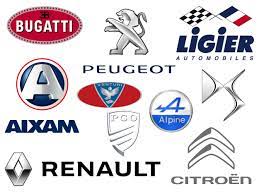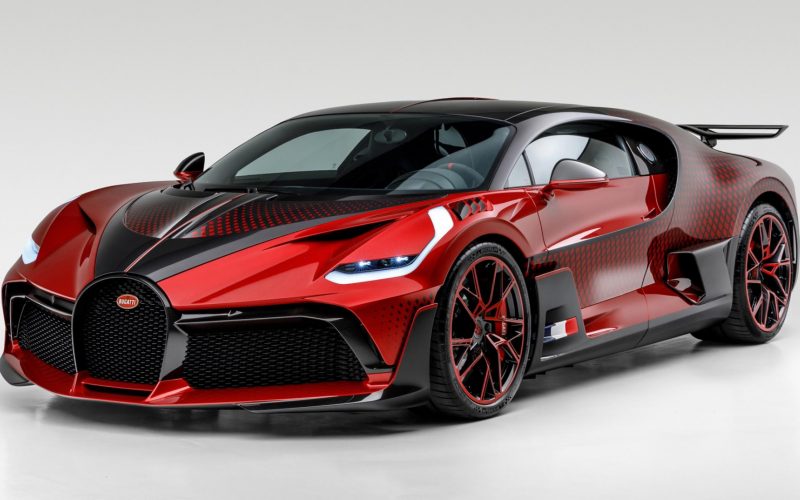According to reviews, French cars are the most popular in the European market, with around two-thirds of their vehicles driven in Europe. Citroen, Peugeot, and Renault are the three major vehicle manufacturers in France. Although several major car companies have established manufacturing facilities in France, These three still remain the classic French vehicle brands of choice. However, Venturi, a luxury car manufacturer based in Monaco, and Bugatti, which was acquired by Volkswagen in 1998, are two more noteworthy companies. Alpine is also well known for its race and sports cars. Let’s take a look at some of the most well-known French car brands in the USA and their logos.
Old French Car Brands
Around 60 million automobiles are created each year, but how much do we truly know about the history of some of these car brands we see? Every car company has a rich history, ranging from its origins to its humble beginnings in the 1800s. Further, this rich history has helped to shape the car companies into what they are today. Keep reading to see French car brands you can find in the USA.
Peugeot
Peugeot is the world’s oldest automotive brand dates back to 1803 by Jean-Pierre and Jean-Frédéric Peugeot. It began as a family-run grain mill, producing saws, steel strips, and springs for the watchmaking industry before moving on to bikes in 1830 and then vehicles in 1882. The first Peugeot automobile was displayed at the Paris World’s Fair in 1889. This steam-powered three-wheeler is notable for its popularity at the fair and for being the first car in Italy around 1893. Yes, that’s true the first drive on Italian roads was French. The car was imported from France in 1892 by Gaetano Rossi, a wealthy textile industrialist, and delivered to his residence in northern Italy the following year. Moreover, Peugeot has gone a long way and is continuing to improve.
Panhard
René Panhard and Émile Levassor created Panhard et Levassor as an automobile manufacturing firm in 1887.
Panhard is a light tactical and military vehicle manufacturer based in France. Panhard was acquired by Auverland in 2005, however resulting in its current iteration, which is now a part of Renault Trucks Defense. For 40 years, Citroen owned Panhard, then PSA following Peugeot’s 1974 takeover of Citroen. The united firm currently goes by the name Panhard.
Read Also: GERMAN CAR BRANDS: The Most Reliable Brands in 2022 (Updated)
French Car Brands Logos

France was one of the first countries to produce automobiles. However, France was the second-largest European manufacturer after Germany and the world’s sixth-largest automaker. Each of these brands has its own unique identity, let see some of the french car logos that make these cars unique.
Bugatti Logo
Ettore Bugatti was born into a family of jewelry designers and artists. His artistic ability was important in defining the marque’s unique and recognizable designs, as well as its corporate brand. Hence, the Buggati cars didn’t have any gaskets, thus the safety wires just looked like lace patterns. This may also be why the Bugatti logo has red dots. The Bugatti logo’s primary color is red, which denotes great power, passion, and driving enjoyment. Black colors indicate excellence and courage, whereas white shades represent elegance and nobility.
Renault Logo
Victor Vasarely, a prominent Hungarian-French graphic artist, redesigned the Renault logo in 1972. By integrating angular lines while maintaining the basic diamond shape, he made the Renault emblem more dynamic, consistent, and cleaner.
Since its inception in 1923, the Renault diamond emblem has gone through numerous revisions. Renault’s current logo was unveiled in 2015. Saguez & Partners redesigned the previous logo in 2007.
Peugeot Logo
After the merger between Peugeot and Citroen in 1976, the PSA Peugeot-Citroen holding company came into existence. Hence, in 1978, the group purchased Chrysler Europe. After which, they reverted to the heraldic lion with a much more polished and sophisticated design called “Lion fil” to boost its corporate image.
Silver, blue, and black is the colors on Its logo. Blue is a connection with a prominent French automaker’s forward-thinking style. Further, Silver represents new ideas and traditions based on a wealth of experience. The color black commonly represents a lion’s shadow.
Citroen Logo
Throughout the years, the French Citroen car brands and their logos have seen various changes. Yellow and blue were the primary hues in its early incarnation. The current red and white color scheme, on the other hand, came to light in the 1980s. Citroen’s current logo was first unveiled in 2009. It’s a 3D variation of the original logo with slightly less sharp chevrons in a slick chrome finish, designed by the renowned San Francisco branding agency Landor Associates. The silver hue provides the emblem a modern and sophisticated appearance, while the red adds a sense of love for automobile design.
Dacia Logo
Dacia is Romania’s most profitable corporation and largest exporter, accounting for 7.3% of the country’s total exports in 2014. The Dacia factory in Mioveni, Argeș County, is Europe’s fifth-largest vehicle factory by volume.
Aixam Logo
The Aixam logo is very straightforward. The logo depicts a circle with a large “A” in the center. The Aixam name appears in the middle of the letter “A.” This logo was used by the Aixam Company in its early stages. The Aixam logo also has no special meaning; it simply represents the company’s name.
DS Symbol
Instead of the iconic Citroen double chevron, their back badge will be a new DS emblem, and all will be stylistically distinct from their equal sister car. Citroen has recently released some dramatic-looking prototype sports cars, including the fully functional Citroen Survolt, which is badged as a DS. Indeed, the Citroen Survolt prototype is developed as the future sports coupé of the DS series.
Read Also: EUROPEAN CAR BRANDS: Top 19+ Luxury European Car Brands in the USA
French Car Brands in the USA
In 1969, roughly a dozen models from France’s main automakers were on the market. Due to declining sales and a general failure to adapt to the complexities of the American market, they all left the country decades ago. None have ventured to return since, but the resurgent french car brands (PSA Group) wants to reintroduce its Peugeot brand in the USA sooner.
While many automobile manufacturers disappear, just a few survive. Peugeot was, until recently, simply another name on the list of defunct automakers. On the List of the Fallen french car brands among other companies that sold cars in the USA. The French automaker last sold cars in the United States in 1991, but it has now announced that it will return. So, there might be French car brands returning to the USA.
Although Peugeot’s chances are slim, we doubt if any, of the present European lineup will make it to the United States.
All French Car Brands
These major French vehicle brands are responsible for the global recognition of French automobiles. Most of these vehicle manufacturing companies are likely familiar to you. So, let’s take you through all the french car brands and their logos.
Peugeot
Peugeot, one of the most well-known automobile manufacturers, has a lengthy history in France and Europe. Hence, the brand, which dates back to the mid-nineteenth century, has progressively evolved into one of the top European automobile firms with a global reputation. Peugeot, along with Citroen, is a cornerstone of the French economy. Producing just under 1 million automobiles per year and employing 83 000 people. But, particularly during times of economic crisis, this French auto behemoth has a keen understanding of the restrictions and challenges of a capitalist economy. As a result, after starting to build automobiles in the rest of Europe, it has transferred some of its production sites to Russia, Latin America, and China.
Its sales grew in the second quarter of 2014, with around 725 000 vehicles delivered globally. This is great news for the brand, which is starting to gain traction among Chinese and Russian customers. The 108, the company’s newest model, has received praise from critics for both its look and performance. Toyota’s Aygo and Citroen’s C1 are now competitors for this model.
Renault
Renault, another strong pillar of the French automobile industry, is known for its affordable cars and vans. Although the French car company previously produced trucks and buses, its main production sites (including Dacia in Romania and Samsung Motors in South Korea) currently only focus on the Clio, Megane, Captur, Koleos, Scenic, and a few other models.
Following the acquisition of former auto manufacturing factories in Romania and South Korea, some French cars were marketed under national brands, including the Sandero, Logan, Lodgy, and Duster in Romania, and the Renault Samsung, Scala, and Talisman in South Korea. In emerging markets, these less expensive models are particularly popular.
Renault was the world’s eleventh largest automaker by volume, with 50.5 percent of sales coming from outside of Europe. The Renault–Nissan Alliance is the automotive industry’s fourth-largest conglomerate.
Renault also considered electric vehicles, putting the Renault Zoe ahead of the Volvo V60 plug-in and the Mitsubishi Outlander in terms of popularity in the United Kingdom. Renault, as a more affordable alternative, won the hearts of Europeans, propelling overall electric vehicle sales in 2014.
Bugatti
Bugatti was founded by a family in Alsace at the turn of the twentieth century and has had a tumultuous history before being acquired by Volkswagen recently. The legendary Bugatti Veyron, Grand Sport, and SuperSport are the only cars produced under this moniker at the time.
Citroen
PSA Citroen’s other half is notable for its radically creative approach to auto manufacturing, which has been visible since the business became the first to mass-produce automobiles outside of the United States.
Citroen has been to increase sales significantly in the first quarter of 2014, despite not having the same reach as Peugeot. China also remains a major factor, with Citroen Dongfeng seeing a 16 percent increase in sales. Hence, the 1992 merger between Dongfeng and Citroen led to the sale of numerous models in China, the most popular of which is the C2.
The new C4 Picasso, which has sold 127 000 units since its launch, and the C-Elysee, which has an excellent design and is specifically designed to conquer international markets, are two of the top models for French auto manufacturers in 2014.
Venturi
Venturi is one of the more upscale French car brands, known for its high-end electric vehicles. Unlike its rivals Renault and Peugeot, this brand is relatively new, having been founded in the early 1980s. Venturi designed two famous models that drew worldwide attention to make a promise to deliver only electric vehicles: the Fetish and the Eclectic.
Due to its unusual shape and status as the world’s first solar-electric vehicle, the latter attracted media attention. The Fetish, an all-electric sports car, boasts a 340-kilometer range and a top speed of 110 miles per hour. The price is a little high – $400 000 – because this model is only produced in 5 pieces per year.
Alpine
This list of french car brands will not be complete without mentioning Alpine. A brand created in the late 1950s. Alpine is recognized for developing race and sports cars, and it rose to prominence after WWII when it began making vehicles. Another reason for its appeal was its affiliation with Renault, who manufactured Alpine’s engines before purchasing the company in the 1970s. The name “Alpine” was changed to “Renault Alpine” after the takeover.
DS Automobile
The DS marque was first announced in early 2009 by Citroen as a premium sub-brand added to certain models, with DS being an abbreviation of Different Spirit or Distinctive Series (although the reference to the historical Citroen DS is evident), to run in parallel to its mainstream cars. The name is also a play on words, as it is pronounced similarly to the French term déesse, which means goddess. Citroen label has been removed from the DS line of cars, while it has persisted as a separate premium brand produced by Citroen.
Other French Car Brands include;
- Dacia
- Aixam
- Ligier
- Microcar
- PGO
- Venturi
DISCLAIMER!
This article should NOT be used as a guide for purchase, it’s solely for informational purposes. We thereby emphasize that we do NOT endorse any of the brands in this post. They are subject to your choice of decision and verification. We are not sponsored by any of the brands and the information provided here is to the best of our knowledge.
Frequently Asked Questions
What is the most reliable French car?
One of the Peugeot 3008 owners are the happiest.
Which French car brand is best?
- Peugeot. Peugeot is one of the oldest automobile businesses in the world, having been founded in 1810….
- Renault. Renault was created approximately 125 years ago in 1898….
- Citroen / DS.
- Bugatti
- Alpine.
Are French cars made in France?
Several major vehicle companies have established production sites in France, although Peugeot, Citroen, and Renault remain the classic French car brands par excellence.





